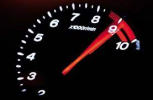Okay, I've been experimenting with single-row Skiff bearings. Regular single-row caged bearings tend to be steel or ceramic balls set into either a solid polymer disc or a folded brass cage approximating a disc. Skiff beaings or "Rocket Glide Rings" set them into a solid phosphor bronze disc. In theory, they are very high quality bearings but I don't know if they are really better or to what extent. What seems to be the biggest difference with Skiff is that he has more balls.
For instance, lots of decent Chinese knives from brands such as Civivi have a 5mm pivot and use 1/16" bearings. They will often have nine balls in the ring. The Rocket Glide Rings in that size have eleven balls.
Now, that might not seem like a big difference. Coincidentally, the biggest difference I've noticed after trying them in a bunch of knives isn't necessarily better action. It is usually an improvement in the range of proper tension to achieve good action. I'm sure you've all noticed that in adjusting pivot tension, one direction moves towards smoother action and the other moves towards solid lock-up (lack of side-to-side blade play). There should be a range over which everything is happily balanced. The size of that range varies depending on the knife. Quality knives with good machining seem to have a wider range of "all set" while lower quality knives or lemons might have a smaller range (or none at all in the worst cases). This is the most common place where I feel improvement with the Skiff bearings. That translates to improvements in stability and can mean better action.
Extrapolating from that, I'd imagine that more balls spaced out into an extra dimension could be even better.



